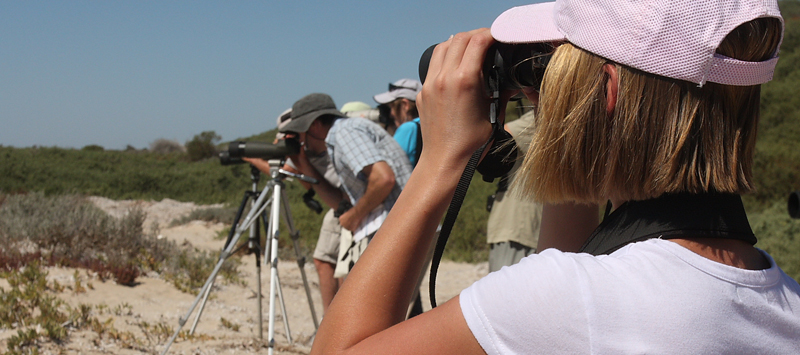Searching for Leg Flags
With high numbers of waders carrying flags at the present time it is essential that maximum effort is put into searching for flagged birds. Large numbers of sightings from a particular site or area, far from being more boring sightings, add more to the value of the flagging program than just one or a few sightings.
For example it is has now been possible to use flag sightings to show differing arrival dates and median migration dates of different populations of the same species from different parts of Australia, through Asia. This is only possible with very large numbers of sightings.
Recording the number of birds searched to yield one flag sighting will also help in determining the proportion of different populations migrating through an area and also may give an indication of how correct the population estimates are.
The flagging program can be used to answer all sorts of long standing questions about movements of waders. To what extent is South Australia used as a stop over for waders migrating to and from S.E. Australia? To what extent do southern Australian waders stop on the north coasts of Australia on northward migration, or do they overfly them? What is the entrance point on the Queensland coast for Bar-tailed Godwits on southward migration after their assumed direct flight from Alaska? What is the role of the island arc route though Indonesia as opposed to the direct non-stop migration route to the Yellow Sea? To what extent do waders relocate their non-breeding areas, in subsequent seasons and do some species relocate to the inland Australia when conditions are suitable?
There are dozens of such questions which we now have the potential to answer. The flagging program is potentially a very powerful tool in helping us to understand wader movements and populations, and so give solid scientific evidence in assisting in the formation of conservation programs.
Everybody, anywhere, can help in this program. Please look for leg flags. The more that are seen, the greater the value. Also records of the absence of flagged birds, together with the number of birds searched can be of value.
Please Note
Please do not report orange flag sightings in Victoria in the area from Corner Inlet westwards to Port Phillip Bay, or yellow flag sightings in NW Australia from Port Hedland Saltworks, 80 Mile Beach or Roebuck Bay. These birds have been banded locally.


